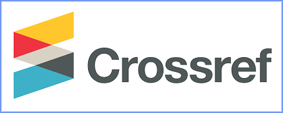Web-Based Planning of Geographic Information System Mapping of Broken Roads in Kampar Regency
DOI:
https://doi.org/10.31004/jestm.v1i1.16Abstract
Road is a land transportation infrastructure and transportation route that is very vital at this time. Damage to the road is a big problem for some people who use the road every day. Kampar Regency during 2020 damaged roads including high, lightly damaged asphalt surface conditions 59.20 km, gravel heavily damaged along 4.00 km, and heavily damaged dirt road surface conditions along 2.80 km. Damage to roads in Kampar Regency can cause various kinds of losses, such as obstruction of road access to the destination, accidents, and damage to vehicles due to passing through bumpy and potholed roads, thereby increasing vehicle repair operational costs. Damage to roads can be overcome by making plans in a web of public complaints to the authorities in reporting the location of damaged roads. The purpose of this research is to help make it easier for the public when reporting damaged roads to PUPR by using the online damaged road reporting system by entering their name and email. The research method used in this research is the waterfall method. This waterfall method has a sequential flow of software starting from planning. The design of this system uses the Unified Modeling Language (UML) and Object-Oriented Analysis Design (OOAD).
References
Abdurahman, H., & Riswaya, A. R. (2014). Aplikasi Pinjaman Pembayaran Secara Kredit Pada Bank Yudha Bhakti. Jurnal Computech & Bisnis, 8(2), 61–69.
Aronoff, S. (1989). Geographic information systems: a management perspective.
Baroš, T., & Stojanović, T. (2015). Geographic Information System (GIS) in Mapping of Mine Suspected Area in the Republic of Serpska. Global Journal of Science Frontier Research: H Environment & Earth Science, 15(3), 0–4.
Barus, B., & Wiradisastra, dan U. S. (2000). Sistem Informasi Geografi; Sarana Manajemen Sumberdaya. Laboraturium Pengindraan Jauh Dan Kartografi Jurusan Tanah Fakultas Pertanian IPB. Bogor.
Burrough, P. A. (1986). Principles of geographical. Information Systems for Land Resource Assessment. Clarendon Press, Oxford.
Chrisman, N. (1997). Exploring Geographic Information Systems. New York : John Wiley & Sons Inc, 1997.
Cimperman, R. (2006). UAT Defined: A Guide to Practical User Acceptance Testing (Digital Short Cut). Pearson Education.
Clariano, A. (2019). Sistem Informasi Geografis Untuk Informasi Lokasi Dan Jalur Menuju Rumah Sakit Di Kota Salatiga. Journal of Chemical Information and Modeling, 53(9), 1689–1699.
Dharwiyanti, S., & Wahono, R. S. (2003). Pengantar Unified Modeling LAnguage (UML). IlmuKomputer.Com, 1–13. http://www.unej.ac.id/pdf/yanti-uml.pdf
Ekadinata, A., Dewi, S., Hadi, D., Nugroho, D., & Johana, F. (2008). Sistem informasi geografis untuk pengelolaan bentang lahan berbasis sumber daya alam. Bogor, Yudhistira.
Eril. (2020). Mengenal Framework Yii, Beserta Kelebihan & Kekurangan. https://qwords.com/blog/framework-yii/
Downloads
Published
How to Cite
Issue
Section
License
Copyright (c) 2021 Jamil Rasyid, Novi Yona Sidratul Munti, Deddy Gusman

This work is licensed under a Creative Commons Attribution-ShareAlike 4.0 International License.










